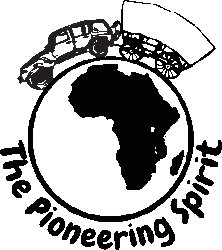It’s called Slaying the Dragon within the international travel community. I think that starting from the USA may give us an unrealistically simplified view of the process of shipping a vehicle overseas. I will wait until we are driving the Jeep out of the port in South Africa before I fully form an opinion of this process, though we have every assurance this will go just as smoothly as the first part of the process here in the States.
Last summer we contacted companies known for shipping vehicles over the oceans for bids, and selected the one that worked best for us, shipping from the west coast, not Texas, to keep our costs in check. After some delays, discussed in earlier posts, we finally reached out to them to get an updated quote and start the process in earnest. After selecting a date, they let us know where to drop off the Jeep. We booked our flight and planned our drive from Portland to Long Beach, CA. After many good-bye dinners with family and friends, we packed the Jeep to the gills and got ready for the trip. Jen’s parents drove to Salem for breakfast with us, and saw us off. We made it through the Siskyou Pass without any rain nor snow, making it to Chico for the night. The next morning, we made it through Sacramento to Lodi before we needed fuel, over 600 miles from home and averaging just over 16 mpg! The San Joaquin Valley seems to go on forever. That said, the sights kept us interested in what we might see next. As we drove by the orange groves, we could smell the citrus in the Jeep. We even saw where they were picking oranges, reminding us of our time at pear harvest in Hood River. Up and over Taejon Pass and down the Grapevine, the Jeep went slowly, but surely and made it into the LA area without issue. We only saw real traffic in the last 15 miles of the journey, so we count that as a win. It only took 2 days to get to Los Angeles, and we had good weather and clear roads the whole way.
The next two days were spent taking care of the last minute business prior to leaving. Canceling domestic car insurance, health insurance and cell phone contracts since they won’t work in Africa. Washing the Jeep, so it is clean upon inspection by customs in South Africa. One last phone call to family before we are half a world away. On Friday, we dropped off the Jeep at the facility that will load it into a container for shipment. This is the step where most people run into trouble, as these locations are generally in rougher parts of town, and you are leaving your vehicle, in our case it is our home for the next few years, in someone else’s hands. Everyone was super friendly though, and thought our trip sounded fun. They walked us through the loading process, and we got to tour their warehouse and see how they were loading vehicles into containers. It was every car guy’s dream! The sheer variety and number of cars was overwhelming. Beautiful customs, beat up projects, late model daily drivers, and salvaged scrapers, all headed overseas. I saw a rare 1970 split grill Camero, a 1st generation Ford Bronco in beautiful shape, a handful of hot rod projects, and countless scrapped salvage Toyotas. They stuff 4 pickups and/or SUVs in a 40′ container when they are going for salvage. The Jeep will get it’s own 20′ container, or, as we have taken to calling it, a single cabin for it’s cruise to Africa. Our flight is set for the next day, to arrive in Cape Town about noon on Monday (3 AM PST). Look for our next post, from last summer!








